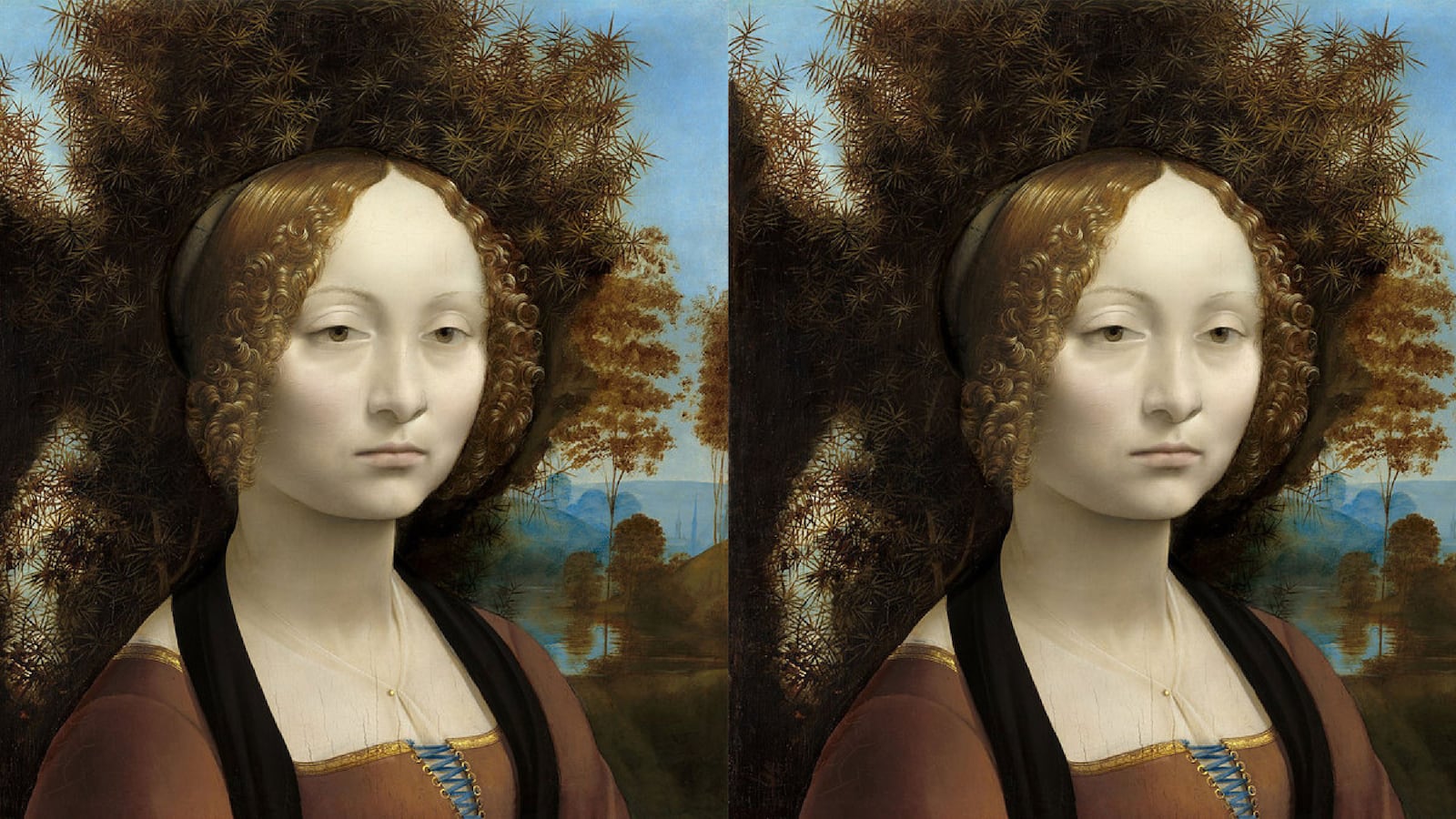Years ago, I decided that the greatest need in our country was art… We were a very young country and had very few opportunities of seeing beautiful things, works of art… So, I determined to make it my life’s work.
--Isabella Stewart Gardner (1840-1924)
It’s amazing to realize that most of the priceless Italian Renaissance masterpieces in American museum collections result from the efforts of just a handful of individuals.
Starting in the mid-1800s, American art enthusiasts began to seek out Italian paintings for their own collections. Like European collectors of the time, they had a taste—sometimes a passion—for Italian Renaissance paintings. It seemed that a work by Leonardo, Raphael, or Titian might never go out of fashion. This hunger for paintings of the Italian Renaissance continued through the post-World War II era.
Over the course of 150 years, a small handful of American collectors wielded tremendous influence over the objects that would eventually populate our country’s museums. They relied on trusted advisers such as the famous Bernard Berenson to help them navigate tricky auction houses and private collections in Europe. They also traveled extensively, personally visiting artists, collections, and auction houses to hand-select Italian masterpieces.
These collectors—people like Pierpont Morgan, Isabella Stewart Gardner, Henry Walters, John Ringling, and a few others—made an indelible mark on access to fine art for the American public. Luckily, most of these collectors shared their legacies, and today, we can enjoy a taste of authentic Italy without ever getting on a plane.
THE HEAVY HITTER
Leonardo da Vinci, Ginevra de Benci, National Gallery of Art, 1494-98, Washington, D.C.
As the only painting by Leonardo da Vinci in America—and a portrait of a Florentine lady, no less—Ginevra de Benci’s likeness is arguably one of the most important works of the Italian Renaissance in America. The National Gallery purchased it with funds from the Mellon family in 1967. At $5 million, it was the most expensive price an American museum had ever paid for a work of art.
What’s remarkable about this painting is the immediacy of Ginevra herself. In this early portrait, Leonardo is beginning to change the way women are portrayed. Ginevra is not simply a status symbol but a real person. Rather than settling on her clothing or jewels, our eye is drawn instead to the girl’s beautiful yet puzzling face. Is she melancholy? Bored? Sick? Are we looking at the familiar ennui of a teenager? Ginevra seems to look through us instead of at us; what is going through her mind? It’s this psychological rather than emblematic treatment of the sitter that sets this portrait apart from other Italian portraits of the time.
THE ODDITY
Michelangelo Buonarroti, Saint Anthony Tormented by Demons, 1487, Kimbell Art Museum, Fort Worth, Texas
This strange little picture is Michelangelo’s only painting in America, purchased by the Kimbell Museum of Art just a few years ago from a New York art dealer. It depicts Saint Anthony, who, according to the Golden Legend, lived as a hermit in the company of a pig. Not surprisingly, it wasn’t long before visions of demons began to torment him. Michelangelo probably based his composition on an engraving by the German artist Martin Schongauer. What’s even more surprising? Art historians believe Michelangelo painted this picture when he was training in Master Ghirlandaio’s studio, at about 13 years old.
THE NOT-TO-MISS
Artemisia Gentileschi, Judith and Her Maidservant with the Head of Holofernes, 1623-25, Detroit Institute of Arts, Detroit, Michigan
One of the few women artists to rise above the sea of male names in pre-modern Italy, Artemisia Gentileschi was a force to be reckoned with at the turn of the seventeenth century. This impressive painting depicts the biblical Judith’s beheading of Holofernes, a subject that Artemisia would return to more than once over the course of her career. The dramatic lighting calls to mind the work of Caravaggio, but the painting’s directness and realism holds its own. The Detroit Institute of Arts purchased the picture with funds from one of its patrons, Leslie H. Green, in 1952.
THE CURIOUS
Piero di Cosimo, The Building of a Palace, 1480s, Ringling Museum, Sarasota, Florida
There are varied opinions about the subject matter of this interesting painting by the Florentine artist Piero di Cosimo, but most art historians agree that the building in the background probably represents an ideal palace rather than a real one. In the 1920s, John Ringling started construction on his own very real Italian Renaissance palace in Sarasota, imagined as a Venetian gothic palace in the spirit of Isabella Stewart Gardner’s elaborate Boston home. Ringling later bequeathed his palace—and his art collection—to the people of Florida.
THE SURPRISE
Lavinia Fontana, Portrait of Costanza Alidosi, ca. 1595, National Museum of Women in the Arts, Washington, D.C.
Lavinia Fontana, another successful female painter of the Italian Renaissance, painted this serious portrait of the Bolognese noblewoman Costanza Alidosi. The sitter, whose husband Ridolfo was a senator and ally of the Medici family, turns her body toward the viewer, meeting our eyes with a sober expression. The artist excelled at rendering the gold embroidery, an intricate lace collar, and luxurious fabrics. At the same time, Costanza is much more than the sum of these decorative details; she comes across as a powerful, intimidating presence. Wilhelmina Cole Holladay, whose private collection of works by women artists became the core of this fascinating museum, is to thank for bringing this fascinating painting to America.
THE DELIGHT
Vittore Carpaccio, Portrait of a Venetian Nobleman, ca. 1510, Norton Simon Museum, Pasadena, California
This fun portrait by Vittore Carpaccio portrays a formidable-looking Venetian nobleman whose striking presence is made all the more intriguing by the fact that we don’t know the sitter’s identity. The great pouf of hair, the tight hat and collar, and the steady—perhaps untrusting—gaze give us the idea of a tough character with a sense of fashion and flair. This painting is just one of many acquired in the 1950s and 1960s by Norton Simon, a successful California businessman who became passionate about collecting art.
THE HIDDEN GEM
Francesco Francia, Madonna and Child with Two Angels, 1495-1500, North Carolina Museum of Art, Raleigh, North Carolina
Francesco Raibolini, also called Francesco Francia, is an unsung hero of Italian Renaissance painting. Hailing from Bologna, he also worked as a goldsmith, and his pictures seem to shine with an inner luminescence that seems perfectly suited for an Italian Renaissance Madonna and Child. This painting was acquired with funds from the Samuel H. Kress Foundation. Samuel Kress, a businessman and philanthropist, began bringing Italian Old Master paintings to America during the depths of the Great Depression, and over decades, the Kress Foundation has brought Italian paintings to museums across the country. The North Carolina Museum of Art holds several impressive works of Italian Renaissance painting, but this one stands out.
MORE GREAT COLLECTIONS OF ITALIAN RENAISSANCE ART IN AMERICA
EAST COAST:
Frick Collection, New York, NY: Works by Andrea del Sarto, Veronese, others
Isabella Stewart Gardner Museum, Boston, MA: Works by Michelangelo, Raphael, Titian, Veronese, others
Metropolitan Museum of Art, New York: Works by Leonardo da Vinci, Michelangelo, Raphael, many others
Morgan Library and Museum, New York: A fabulous collection of Italian drawings
Museum of Fine Arts, Boston: Works by Donatello, Duccio, others
National Gallery of Art, Washington, DC: Works by Fra Angelico, Titian, Raphael
Ringling Museum, Sarasota, FL: Works by Piero di Cosimo, Sebastiano del Piombo, Titian, others
Walters Art Gallery, Baltimore, MD: Many Italian late medieval / early Renaissance panel paintings and manuscripts
MIDWEST:
Art Institute of Chicago, Chicago, IL: Works by Botticelli, Tintoretto, Titian, and others
Cleveland Museum of Art, Cleveland, OH: Works by Fra Angelico, Fra Filippo Lippi, Michelangelo
Detroit Institute of Arts, Detroit, MI: Works by Bellini, Botticelli, Bronzino, Fra Angelico, Titian, Veronese and others
WEST COAST:
J. Paul Getty Museum, Los Angeles, CA: Works by Michelangelo and many others
Norton Simon Museum, Pasadena, CA: Works by Bellini, Botticelli, Donatello, Giorgione, Raphael
Laura Morelli is a Yale-educated art historian and historical novelist. Her latest book, THE NIGHT PORTRAIT—based on the centuries-long saga of Leonardo da Vinci’s portrait of the Lady with the Ermine—is out now. Learn more at https://lauramorelli.com

The Night Portrait: A Novel of World War II and da Vinci's Italy
The Night Portrait
